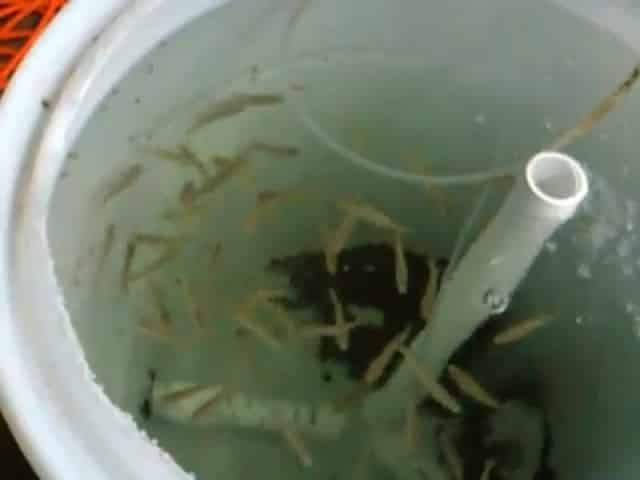
Baby crappies are referred to as smaller crappies which have not grown to table size when they can be caught and sold or eaten. The population of crappies can multiply very fast, with the white crappies having a faster reproduction rate than the black crappies. During the spawning season, thousands of eggs are released and fertilized.
In some cases, over 50,000 crappie eggs can be spawned per adult female. The crappie eggs are laid at a depth of about five feet, and after hatching the baby, crappies begin their ‘journey’ to adulthood.
Baby Crappies
Where are baby crappies found?
After hatching, baby crappies maintain their initial habitat, thriving within schools of different sizes. At this time the baby crappies are in danger of becoming food for larger fish. They can be found lurking in places where they are protected from larger fish such as below rocks, deep in cracks within rocks close to the shoreline, under weeds, or fallen trees in the water.
Baby crappies have also been specially separated after hatching and reared in private ponds where they grow to maturity, in some cases, they are reared in small aquariums or fish tanks in small numbers.
Baby crappies feed on similar foods eaten by fingerlings generally such as zooplankton, and larvae or insects found in the water. These foods are also sought by the bigger fish which causes a scale where only the toughest baby crappies may survive while growing in the open waters.
Size
Crappies can grow up to three inches in one year. However, this size is still quite small for the table size which is about 7 to 10 inches. To attain the table size, baby crappies will have to remain hidden avoiding the bigger fish which can eat them as food.
Generally, fish farms stock the black crappies for breeding rather than the white crappies because the black crappies do not multiply as fast as the white crappies. Overpopulation can be a problem when there is limited space (natural ponds) on the farm, and overpopulation can also affect the size of the adult crappies.
How to protect baby crappies
In some farms, the adult crappies are removed after spawning, and the baby crappies are left in the natural ponds to hatch and grow to maturity. Baby crappies can also be protected in ponds where the farmer has set up brush piles, water plants, hollow rocks and other obstacles that provide hiding places for the baby crappies.
In some states, crappie fishing is regulated in a way that the baby crappies have enough time to grow into adults. Other regulations make it mandatory that anglers should catch only crappies of a particular size. In these places, an angler is expected to release smaller crappies back into the water if they do not measure up to the recommended table size.
It is also important to prevent lakes and rivers where crappies spawn from pollution. When harmful chemicals or fertilizers are washed into the rivers, these substances can kill or hinder the normal development of the baby crappies.
In conclusion, a majority of the baby crappies grow into adults, issues such as overpopulation are checked naturally in the rivers and lakes. Farmers who also wish to rear their baby crappies can purchase fingerlings to be bred in their private natural ponds.